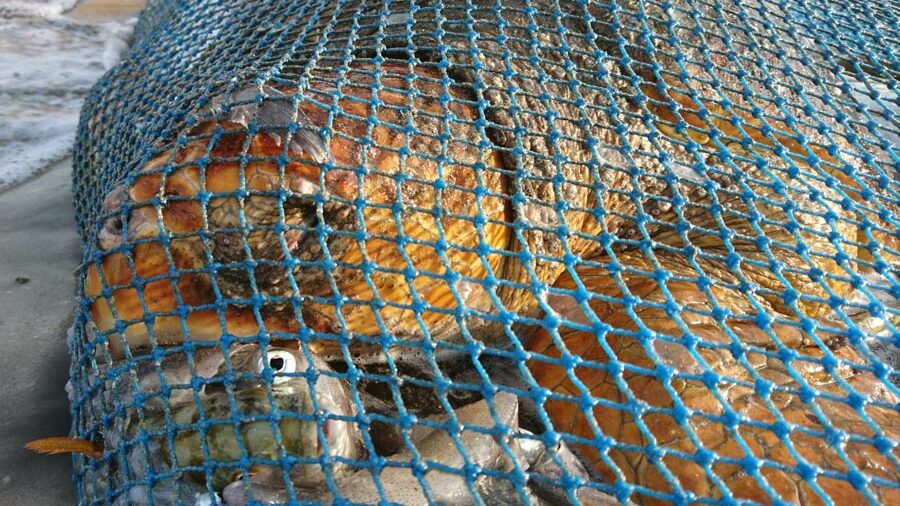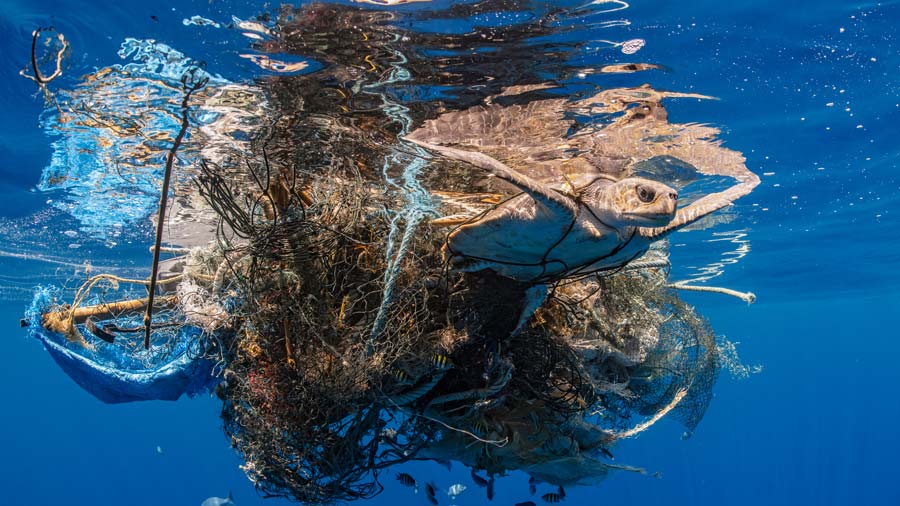Neither bycatch nor ghost fishing are intentional actions, rather they are by-products of fishing. The most important difference between bycatch and ghost fishing is that one involves active fishing gear, and one does not.
Both bycatch and ghost fishing can cause life threatening injuries, and sometimes death, of non-target marine species. But it is important to define these different causes of fishing-related mortality, as the two issues require slightly different management strategies.
Bycatch
Bycatch is when fishing gear catches non-target animals whilst being controlled by the fishing industry. For example, purse seine fisheries often cast one large net around a school of fish (often tuna). Due to the size of the net, as well as catching the target species, it may also accidentally catch ‘non-target’ species, such as cetaceans, sharks and sea turtles.
Ghost Fishing
Ghost gear also catches and kills animals, but this happens despite the fishers no longer having operational control over the gear. For example, a fisher’s net may wash away or become dislodged during a storm. That lost net may then catch and kill marine life when drifting out in the open ocean, in a process called ghost fishing.



